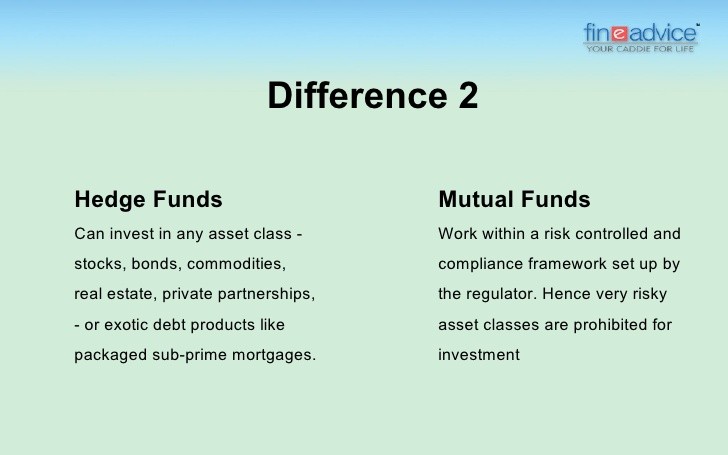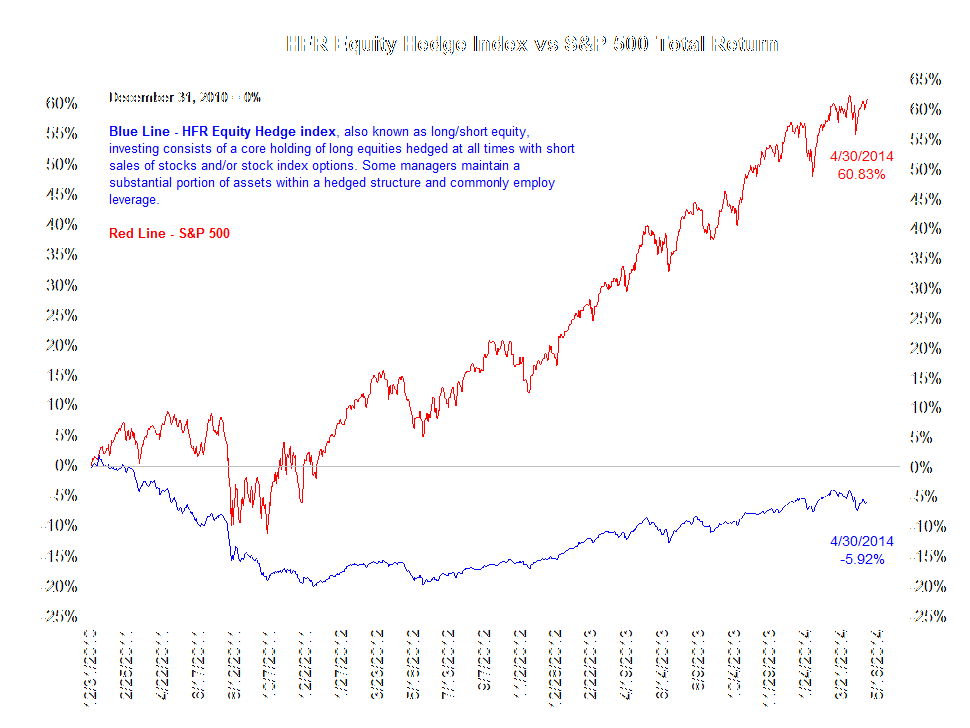Hedge funds v funds
Post on: 25 Апрель, 2015 No Comment

on 1/12/13 at 8:00am
Many people here on WSO are obsessed with hedge funds and look upon the mutual fund industry with disdain. However, I have seen a lot of misinformation out there on what mutual funds even do, so I wanted to layout the basics of both hedge funds and mutual funds and what makes them similar and what makes them different. Also, I want to layout what some of the incentives are for some of the managers of these funds and how those incentives either align or don’t with the investors. I’m not a lawyer. so don’t take this as legal advice. This is just a general outline.
en.wikipedia.org/wiki/Investment_Company_Ac. ). The former defines the fiduciary responsibilities of investment advisers and the latter describes the regulations of ’40 Act funds (mainly mutual funds). Generally, both hedge fund and mutual fund managers need to be registered with the SEC as a Registered Investment Adviser. A Registered Investment Adviser can run both hedge funds and mutual funds, if they so choose and many do.
Most hedge funds are set up as either 3(c)1 or 3(c)7 limited partnerships. The basic difference between these funds is that a 3(c)1 is limited to 99 investors and has an Accredited Investor standard (basically, $1 million net worth or $200,000 in income or $300,000 in income for a married couple) and a 3(c)7 fund allows for up to 499 investors and also has a Qualified Purchaser standard (basically a $5 million liquid net worth requirement and additional standards for institutional investors). Most funds go for 3(c)7 status so they can maximize the number of investors.
Whereas, in a mutual fund, basically anyone can own one.
As you all know, partnerships are allowed to charge virtually any type of fee they desire. Most hedge funds are partnerships that have settled on a management fee and an incentive fee. Mutual funds don’t charge incentive fees. As one might expect, this can have a significant impact on the behavior of these managers, sometimes in unexpected ways.
Incentives by fund type
Everyone knows that good performance attracts assets. So, whether you are a hedge fund manager or a mutual fund manager, you seek to have good performance.
Incentives for mutual fund managers
Because mutual fund managers only receive a fee based on asset levels, the incentive is to gather as many assets as possible. This can be accomplished through strong performance, an effective sales force, differentiated offerings, advertising, brand, convenience, etc.
I’m not going to argue for or against EMH here, but one thing that is almost universally accepted is that a large asset base is the enemy of good performance.
Places like Morningstar rate the performance of mutual funds and make it easy to compare funds. The good or bad performance of a fund follows it for a long time. So, an incentive for a fund that has had good performance is to ‘lock-in’ that performance by becoming more like their index. One of the dirty little secrets of the mutual fund industry is that many fund companies will start a number of funds and manage them before making them available to the public. The reason this is important is because they can make available to the public only those funds which have strong performance. Once again, this good performance will help them attract assets and now they could become more index like and few investors will know because they will generally just see the longer track record.
This isn’t to say that all fund companies do this, I am just laying out their financial incentives. An incentive for someone might also be to protect their reputation and if they have banked enough money, that may be more important to them than anything else.
Incentives for hedge fund managers
Because hedge fund managers receive both an asset based fee and a performance fee, their incentive is to find a balance between asset levels that they can continue to generate strong performance and a sufficient asset base to generate fees. For some funds, this level is relatively small, while for others it is virtually without limit.
In addition, most funds have a high water mark for performance. This means that if they have a bad year, they need to make up that ground before they can start earning an incentive fee again. The incentive here is not to take too much risk so as not to put your incentive fees at risk.
However, there are negatives to the incentives of hedge fund managers as well. The performance fee does present an element of heads I win, tails you lose, for the hedge fund manager. Let’s assume there was a trade out there that had a 20% chance of gaining 1,000% and a 80% chance of losing 100%. A hedge fund manager might take this bet because if they lose, they just close shop; if they win, they earn 20% of the 1,000% (200%). One reason many investors ask hedge fund managers how much they have invested in their own funds is because they want to minimize this incentive to recklessly gamble with their money. However, you have seen enormous blow-ups in the hedge fund space (LTCM, Amaranth, etc.) that you just don’t see in the mutual fund space, partially because of this incentive for hedge funds and partially because mutual funds don’t really have the freedom to blow up like this because of their diversification requirements.
Summary of Incentives
While both types of managers have incentives that may not always be to their client’s benefit, most people in the industry try to do the right thing. However, it’s important to know their incentives, because whether it is conscious or not, bad incentives can negatively impact behavior, for at least some people.
Basic Description of Mutual Funds
Mutual funds are considered to be Registered Investment Companies (RICs). These are registered funds that need to comply with certain rules to maintain their tax status and remain available to the general investing public. There are several types of RICs:
1. Open end funds: these are the funds you are most likely familiar with. You can buy or sell these funds at the close at the Net Asset Value (NAV: the net value of all assets of the fund divided by the shares outstanding). Fidelity. Capital Guardian, T. Rowe Price are some examples of big fund companies.
Liquidity: Daily at the close
Share pricing: Trade at NAV with fund company
Leverage: usually none

2. Closed end Funds
Liquidity: During market hours you can trade your shares on the secondary market.
Share pricing: Done in the secondary market at the prevailing market price. Shares often trade at significant discounts or premiums to NAV.
Leverage: Most funds are levered, especially fixed income funds. Leverage often comes by issuing preferred stock.
Special note: Because the fund never really needs to meet redemptions, these funds can own can own illiquid investments.
Diversification Requirements: Mutual Funds
Here are the two big diversification rules for mutual funds:
1. The 50% Test: For at least 50% of the assets, you can’t have more than 5% of the fund’s assets in any one issuer. Exceptions are government securities and other RICs (usually money market funds, but could be another type of fund).
2. The 25% Test: No more than 25% of fund assets can be invested in one issuer (government securities exempted) or in publicly traded partnerships (usually MLPs).
Diversification Requirements: Hedge Funds
There really is no restriction for hedge funds.
Other reading:
At most, I’ve covered the tip of the iceberg on this topic, so feel free to add your comments here.














